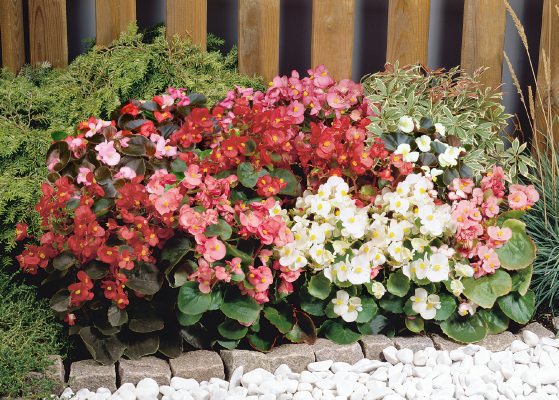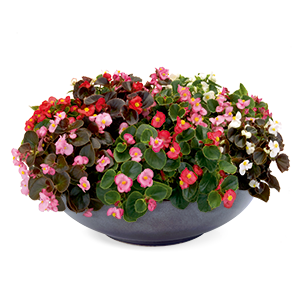

Nightsprint
- Early version of the famous Organdy®
- Colours ranging from white to scarlet over deep green or chocolate brown leaves
- Large flowers and a vigorous habit provide uniformity in earliness and garden performance
- A mix of Nightlife and Sprint
Technical Guide: Click here
All information in our technical guide is based on our own trials and would therefore be as guideline only. Detailed cultivation aspects vary depending on climate, location, time of year and environmental conditions. Benary expressly disclaims any responsibility for the content of such data/information and makes no representation or warranty for the cultivation of any products listed. It is recommended that growers conduct a trial of products under their own conditions.
- Crop Time
- Spring: 10 - 12 weeks
- Height ∅
- 9 ″ / 23 cm
- Width ∅
- 11 ″ / 28 cm
- Exposure
- Sun - Shade
- Seed Form
- Pelleted Seed
- Best Uses
- Bedding, Landscape
Culture guide
Usage
packs, pots, containers and landscape
Sow time
December onwards
Sowing method
1-2 seeds/pellets per plug
Germination
Light is required for germination. 5-10 days at temperatures of 75-80 °F (24-26 °C), and relative humidity levels of 95% or higher. For pelleted seed, slightly higher temperatures and 100% relative humidity aid in uniformity of germination. pH levels of 5.5-6.5 are optimum.
Growing on
Transplant plugs after 7-9 weeks and grow on at 62-68 °F (16-20 °C). Fertilize weekly with 150 ppm nitrogen watching to avoid excessive salt buildups.
Media
Use a well-drained, growing substrate, pH: 5.5-6.2.
Temperature
Grow at 17-19 °C. For selling harden the plants at 7-10 °C and UV light. Begonia semperflorens does not tolerate frost.
Fertilization
Moderate fertilization levels are required. Fertilize the crop weekly with 100-150 ppm nitrogen, using a complete balanced fertilizer. High ammonium and high nitrogen levels cause big foliage. Avoid pH above 6.0, as high pH causes iron deficiency. Apply Fe-chelate if chlorosis becomes a problem. Avoid high salt levels in substrate.
Stage I Starts with the radicle breaking through the testa. The roots are touching the medium. Ends with fully developed cotyledons.
Stage II Starts from fully developed cotyledons. Ends with the fully developed true leaf or true leaf pair.
Stage III Starts from the fully developed true leaf or true leaf pair and ends with 80% of the young plants being marketable.
Stage IV All young plants are ready for sale and in the process of being hardened off. This stage lasts about 7 days.
The cultural recommendations are based on results from trials conducted under Central European conditions. Different conditions in other parts of the world may lead to deviations in results achieved.